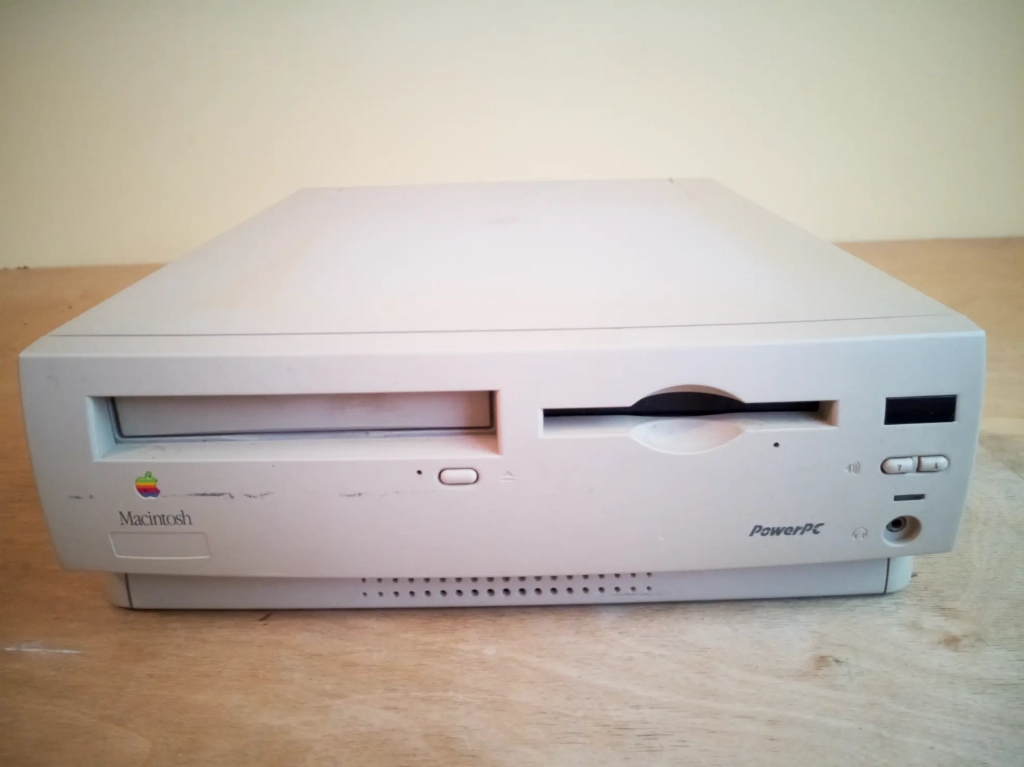In the ever-evolving landscape of personal computing, certain milestones stand out as iconic markers of technological progress. Among these, the Apple Macintosh Performa 6230CD holds a special place. Introduced during the mid-90s, this computer was a part of Apple’s groundbreaking Macintosh Performa series, leaving an indelible mark on the industry.
Cast your mind back to the year 1995, when Apple unveiled the Macintosh Performa 6230CD. This was an era when personal computing was transitioning from niche to necessity. With a starting price of $2,500, this machine might raise eyebrows today, but in its time, it was the embodiment of cutting-edge technology. The 75 MHz PowerPC 603 processor, 16 MB of RAM, 1 GB hard drive, 4x CD-ROM drive, and 1.44 MB floppy drive formed a configuration that set new benchmarks.
Although the specs of the Performa 6230CD may appear modest by today’s standards, they were revolutionary in the context of the mid-90s. This computer was a multimedia powerhouse, a modular system designed for simplicity and performance. From its color display to the bundled keyboard and mouse, the Performa 6230CD provided an all-in-one solution that catered to various computing needs.
One standout feature was the built-in Apple MPEG Media System, allowing users to experience high-resolution, full-motion video on their screens. The integration of a quadruple-speed CD-ROM drive and 16-bit stereo sound further underscored Apple’s commitment to delivering multimedia excellence.
Notably, the inclusion of an internal 14.4-kilobits-per-second data and electronic fax modem with a full-duplex speakerphone and digital answering machine showcased Apple’s foresight in communication technology.
The Performa 6230CD wasn’t just about standalone excellence; it embraced connectivity. The presence of an Apple Video System enabled users to interface with external video sources like VCRs and camcorders, enabling the manipulation of video images. The eWorld on-line service option paved the way for the future of online interactions, while the bundled eWorld application transitioned seamlessly into the era-defining America Online.
Though time has passed, the legacy of the Macintosh Performa 6230CD endures. This model, along with its counterpart, the Power Macintosh 6200, enriched the lives of users across the globe. The Performa 6230CD captured the essence of a transformative era when computers started their journey from corporate tools to household essentials.
The Macintosh Performa 6230CD, despite being a relic of the past, holds a special place in the hearts of those who experienced its prowess. As we reflect on the journey of personal computing, it’s impossible to ignore the impact of Apple’s innovation.
The Performa 6230CD was more than a computer; it was a symbol of progress, a reminder of where we’ve come from, and a testament to how technology has shaped our lives. So, let’s raise a virtual toast to the Macintosh Performa 6230CD—a remarkable piece of tech history that continues to inspire and resonate with us even after 28 years.

Macintosh Performa 6230CD Details
| Introduced | July 11, 1995 |
| Discontinued | April 1, 1996 |
| Model Identifier | 42 |
| Model Number | M3076 |
| Order Number | M4103LL/A |
| Original Price | $2,500 |
| Colors | Platinum |
| Weight | 19 Ibs. 8.618 KG |
| Dimensions | 4.3” H x 12.6” W x 16.5” D 10.92 cm H x 32 cm W x 41.91 cm D |
Mac Performa 6230CD Tech Specs
Processor
| Processor | PowerPC 603 |
| Processor Speed | 75 MHz |
| Architecture | 32-bit |
| Number of Cores | 1 |
| System Bus | 37.5 MHz |
| Cache | 16 KB L1 256 KB L2 |
| Coprocessor | Built-in FPU |
Storage & Media
| Storage | 1 GB |
| Media | 1 – 1.44 MB Floppy 1 – 4x CD-ROM |
Memory
| Built-in Memory | 16 MB |
| Maximum Memory | 64 MB |
| Memory Slots | 2 – 72 pin SIMM |
| Minimum Speed | 80 ns |
| ROM | Unknown |
| Interleaving Support | No |
Display
| Built-in Display | None |
Graphics
| Graphics Card | None |
| Graphics Memory | 1 MB |
| Display Connection | 1 – DB-15 |
Expansion
| Expansion Slots | 1 – LC PDS 1 – Comm 1 – Video I/O 1 – TV |
| Hard Drive Interface | IDE |
Connections
| Ethernet | None |
| Modem | 14.4k (external) |
| Wi-Fi | None |
| Bluetooth | None |
| ADB | 1 |
| Serial | 2 |
| SCSI | 1 – DB-25 |
| Floppy Port | None |
| Audio In | 1 – 3.5-mm analog input jack |
| Audio Out | 1 – 3.5-mm analog output jack 1 – Built-in speaker |
| Display | 1 – DB-15 |
Software
| Original OS | System Software 7.5.1 |
| Maximum OS | Mac OS 9.1 |
| Firmware | Macintosh ROM |
Power
| Backup Battery | 4.5 V Alkaline |
| Maximum Continuous Power | 55 W |
| Line Voltage | Unknown |
Further Reading and References
- Macintosh Performa 6230CD: Technical Specifications – Apple Support
- Macintosh Performa 6230CD – IT History Society
- Macintosh Performa – Wikipedia
- Revisiting the Past: A Look Back at the x200 Series – Low End Mac
- Performa 6200/6300 Series Service Source (PDF) – Apple Repair Manuals
Disclaimer: The data presented in this article is under continuous development and has been manually collected from various sources based on their availability. The author of this article may revise this dataset as additional research is conducted and reviewed. Please note that the information is provided “as is” and “as available” without express or implied warranties. The author cannot be held responsible for any omissions, inaccuracies, or errors in the published information. Any warranties relating to this information are hereby disclaimed.
Last updated: August 26, 2023
